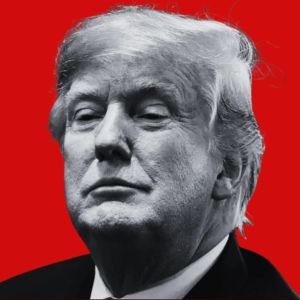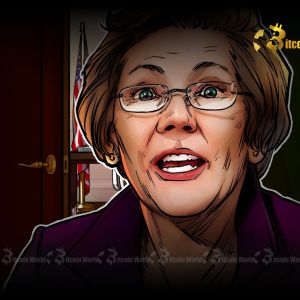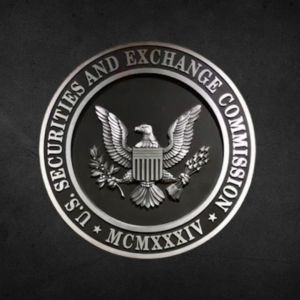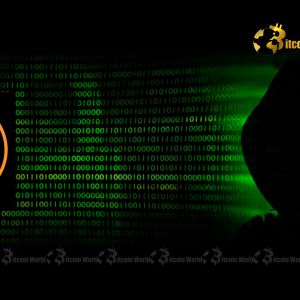President Donald Trump, on Monday, issued formal notices to 14 different countries, informing their leaders that the United States will impose new blanket tariffs on their goods starting August 1. The letters, posted by Trump directly to Truth Social, come just days ahead of a scheduled deadline that would have automatically snapped tariff rates back to earlier highs. He called the letters “lovely” and a step toward “strong friendships,” though the terms were anything but gentle. According to ten different Truth Social posts reviewed by Cryptopolitan, Trump first sent letters to Japan, South Korea, Malaysia, Kazakhstan, South Africa, Laos, and Myanmar. He later added letters to Bosnia and Herzegovina, Tunisia, Indonesia, Bangladesh, Serbia, Cambodia, and Thailand. Source: Donald Trump (Truth Social) All letters listed specific tariff rates assigned to each country. Trump claimed these rates were designed to rebalance trade and would remain “subject to adjustment” based on bilateral relationships. Trump outlines country-specific tariffs and warns of retaliation The new tariff rates varied across the board. Goods from Japan, South Korea, Malaysia, Kazakhstan, and Tunisia will face 25% duties. Imports from South Africa and Bosnia will be taxed at 30%, while Indonesia’s goods are getting hit with 32%. Bangladesh and Serbia face 35%, and both Cambodia and Thailand will see 36% tariffs. The steepest rates went to Laos and Myanmar, with 40% tariffs each. In the letter, Trump warned: “If for any reason you decide to raise your Tariffs, then, whatever the number you choose to raise them by, will be added onto the 25% that we charge.” He also made it clear that “Goods transshipped to evade a higher Tariff will be subject to that higher Tariff,” referring to attempts by countries to route exports through third countries to avoid direct penalties. Each letter emphasized that these tariffs are separate from other sector-specific trade duties. The White House clarified that Trump will also issue an executive order delaying the previous Wednesday deadline to August 1, giving targeted countries a brief extension before the new rates take effect. White House extends pause while markets decline and lawsuits continue Karoline Leavitt, Trump’s press secretary, confirmed the move on Monday and said that more letters are expected. The delay comes after Trump’s earlier pause on April 9, when he cut all tariffs to a flat 10% following a chaotic week in the global markets. That pause was initially supposed to last 90 days, ending this week, but now extends beyond three more weeks. Financial markets did not respond well to the news. The Dow Jones dropped 422.17 points to close at 44,406.36, while the S&P 500 lost 0.79% and ended at 6,229.98. The Nasdaq Composite fell 0.92%, finishing at 20,412.52. Back in April, Trump had introduced what he called the “liberation day” tariffs. At the time, Japan and South Korea were already assigned 24% and 25% tariffs respectively. Trump’s administration said the new rates mostly align with those previous levels, but now add more countries and stricter language. The reason behind all this, Trump claims, is the US trade deficit . He called the tariffs necessary to fix what he described as “persistent imbalances.” Some of the countries receiving letters had large deficits with the US—Japan’s in 2024 was $68.5 billion, and South Korea’s was $66 billion. But others, like Myanmar, had much smaller gaps. That country’s deficit was just $579.3 million, based on 2024 numbers from the Office of the United States Trade Representative. Trump has long argued that the US is being “taken advantage of” by trade partners. Economists disagree on whether trade deficits are actually harmful, but Trump’s administration doesn’t seem interested in those arguments. The letters didn’t just outline penalties—they also gave conditions for relief. Trump wrote that if countries “eliminate their Tariff, and Non Tariff, Policies and Trade Barriers,” the US “will, perhaps, consider an adjustment to this letter.” He added, “These tariffs may be modified, upward or downward, depending on our relationship with your Country,” and ended each letter with the line, “You will never be disappointed with The United States of America.” Each of the targeted countries exports different products to the US Japan and South Korea sell large volumes of cars, electronics, and machinery. Kazakhstan deals in crude oil and metal alloys. Malaysia provides electronic components. South Africa sends precious metals. Laos ships optical fibers, glasses, and clothing, and Myanmar’s top export category is mattresses and bedding. Trump’s team previously claimed the US could secure 90 trade deals in 90 days after launching the reciprocal tariff pause. So far, only vague frameworks have been announced with the United Kingdom and Vietnam, plus an early agreement with China. In the Vietnam deal, the country’s exports to the US will be taxed at 20%, with a 40% tariff for goods rerouted through other countries. In exchange, US exporters get tariff-free entry into Vietnamese markets. One major legal problem still hangs over the policy. In May, a federal district court ruled that Trump didn’t have the legal right to impose broad tariffs under the emergency-powers law he cited. That decision threatened to wipe out the entire structure. But the Trump administration appealed to the federal circuit, which has allowed the tariffs to stay in place while the appeal is reviewed. Your crypto news deserves attention - KEY Difference Wire puts you on 250+ top sites



















